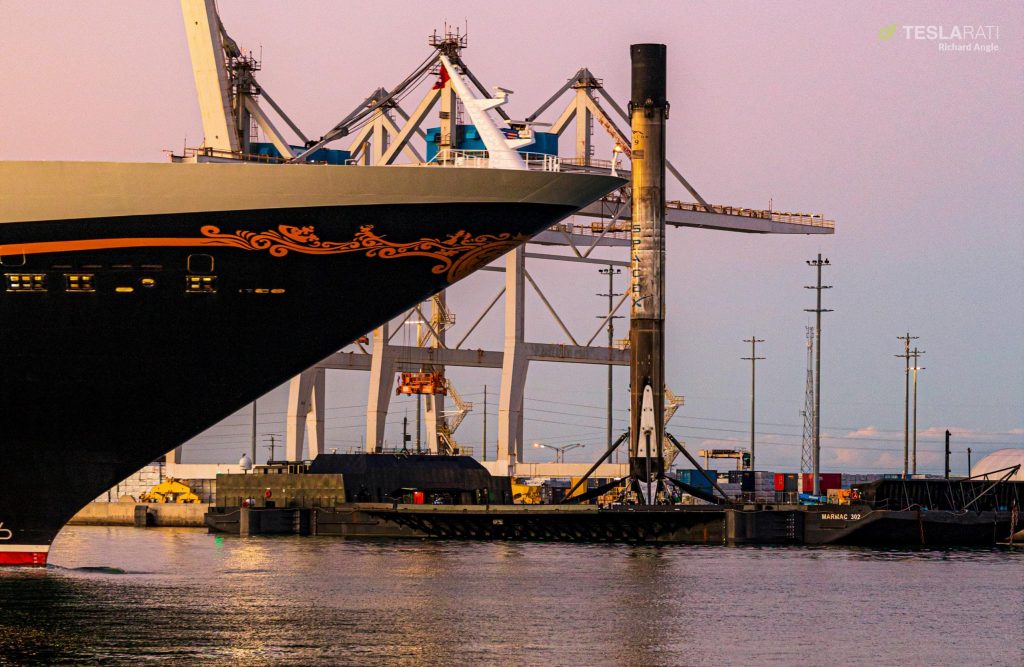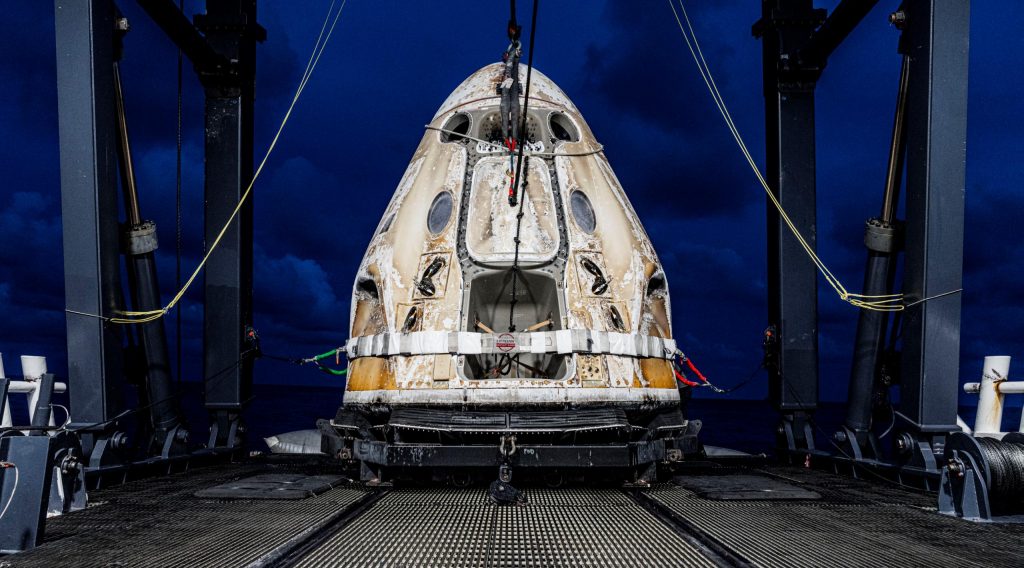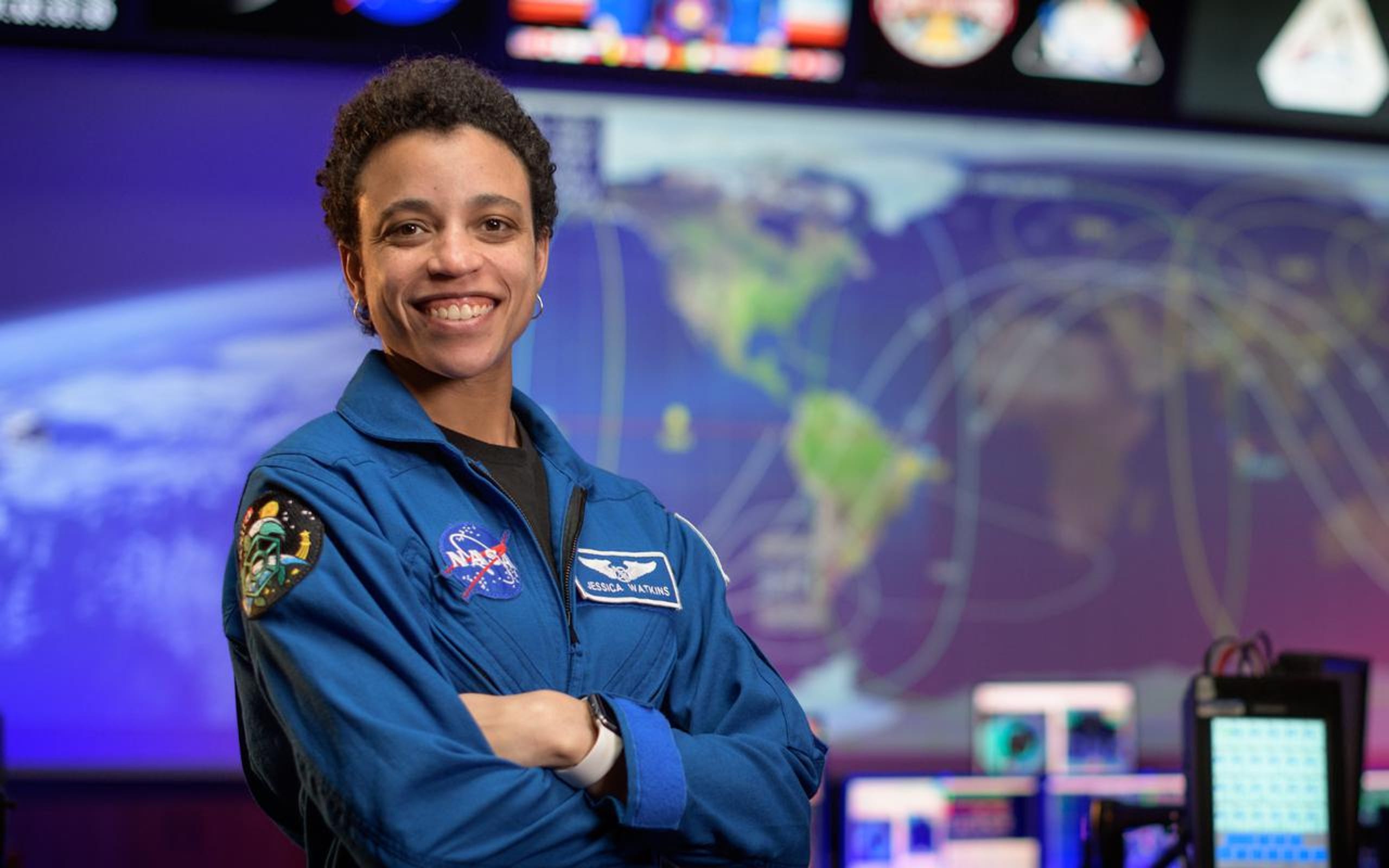14.02.2021
NASA Assigns Astronauts to Agency’s SpaceX Crew-4 Mission to Space Station

NASA has assigned two crew members to launch on the agency’s SpaceX Crew-4 mission – the fourth crew rotation flight of the Crew Dragon spacecraft to the International Space Station.
NASA astronauts Kjell Lindgren and Bob Hines will serve as spacecraft commander and pilot, respectively, for the Crew-4 mission. Additional crew members will be assigned as mission specialists in the future by the agency’s international partners.
The mission is expected to launch in 2022 on a Falcon 9 rocket from Launch Complex 39A at NASA’s Kennedy Space Center in Florida. Lindgren, Hines, and the international crew members will join an expedition crew aboard the space station for a long-duration stay.
This will be Lindgren’s second trip into space, following a 141-day stay at the space station in 2015 for Expeditions 44 and 45. Part of an Air Force family, he was born in Taipei, Taiwan, and spent a good part of his childhood living in England before finishing high school at Robinson Secondary School in Fairfax, Virginia. He earned a bachelor’s degree in biology from the U.S. Air Force Academy, a master’s degree in cardiovascular physiology from Colorado State University, and a medical degree from the University of Colorado. Before being selected as an astronaut in 2009, he was a flight surgeon supporting space shuttle and space station missions. In December 2020, NASA named him as one of the Artemis Team of astronauts helping to pave the way for NASA’s upcoming lunar missions.
Hines, a lieutenant colonel in the U.S. Air Force, was selected as an astronaut in 2017 and will be making his first trip into space. He was born in Fayetteville, North Carolina, but considers Harrisburg, Pennsylvania, to be his hometown. He graduated from Boston University with a bachelor’s degree in aerospace engineering and went on to earn a master’s degree in aerospace engineering from the University of Alabama in Tuscaloosa. He is also a graduate of the Air Force Test Pilot school. Before becoming an astronaut, he supported multiple military deployments in the Middle East, Africa and Europe; served as a flight test pilot for the Federal Aviation Administration; and flew as a research pilot at NASA’s Johnson Space Center in Houston.
NASA’s Commercial Crew Program is working with the American aerospace industry as companies develop and operate a new generation of spacecraft and launch systems capable of carrying crews to low-Earth orbit and the space station. Commercial transportation to and from the station is providing expanded utility, additional research time, and broader opportunities for discovery on the orbital outpost.
For more than 20 years, humans have lived and worked continuously aboard the International Space Station, advancing scientific knowledge and demonstrating new technologies, making research breakthroughs not possible on Earth. As a global endeavor, 242 people from 19 countries have visited the unique microgravity laboratory that has hosted more than 3,000 research and educational investigations from researchers in 108 countries.
The station is a critical testbed for NASA to understand and overcome the challenges of long-duration spaceflight and to expand commercial opportunities in low-Earth orbit. As commercial companies focus on providing human space transportation services and developing a robust low-Earth orbit economy, NASA is free to focus on building spacecraft and rockets for deep space missions to the Moon and Mars.
Quelle: NASA
----
Update: 19.11.2021
.
NASA Assigns Astronaut Jessica Watkins to NASA’s SpaceX Crew-4 Mission

NASA has assigned astronaut Jessica Watkins to serve as a mission specialist on the agency’s upcoming SpaceX Crew-4 mission, the fourth crew rotation flight of the Crew Dragon spacecraft to the International Space Station.
This will be Watkins’ first trip to space following her selection as an astronaut in 2017. Watkins joins NASA astronauts Kjell Lindgren and Robert Hines, as well as ESA (European Space Agency) astronaut Samantha Cristoforetti, as a crew member for the Crew-4 mission.
NASA previously announced the assignments of Lindgren and Hines as spacecraft commander and pilot, respectively, in February, and ESA announced Cristoforetti as a mission specialist for the mission in May.
Crew-4 is scheduled to launch in April 2022 on a SpaceX Falcon 9 rocket from Launch Complex 39A at NASA’s Kennedy Space Center in Florida for a six-month science mission aboard the microgravity laboratory.
Watkins was born in Gaithersburg, Maryland, and considers Lafayette, Colorado, her hometown. She earned a bachelor’s degree in geological and environmental sciences from Stanford University and a doctorate in geology from the University of California, Los Angeles. Dr. Watkins conducted her graduate research on the emplacement mechanisms of large landslides on Mars and Earth. She began her career at NASA as an intern and has worked at the agency’s Ames Research Center in California and NASA’s Jet Propulsion Laboratory in Southern California. At the time of her astronaut selection, Watkins was a postdoctoral fellow in the Division of Geological and Planetary Sciences at the California Institute of Technology, where she collaborated as a member of the Science Team for the Mars Science Laboratory rover, Curiosity.
For more than 21 years, humans have lived and worked continuously aboard the International Space Station in low-Earth Orbit, advancing scientific knowledge, demonstrating new technologies, and making research breakthroughs not possible on Earth.
Through the Commercial Crew Program and broader commercial efforts, NASA is working with private industry to develop human space transportation services and a robust low-Earth orbit economy that enables the agency to focus on building spacecraft and rockets for deep space missions to the Moon and Mars.
Follow Watkins on Instagram throughout her mission and get the latest space station crew news, images and features on Instagram, Facebook, and Twitter.
Quelle: NASA
+++
NASA assigns Jessica Watkins to SpaceX Crew-4, making her first Black woman to join ISS expedition
NASA has assigned astronaut Jessica Watkins to SpaceX's next crewed launch, making her the first Black woman to join an extended mission on the International Space Station.
NASA on Tuesday said Watkins, 33, was assigned to the fourth and final seat on Crew Dragon for SpaceX's Crew-4 mission. Liftoff from pad 39A at Kennedy Space Center is scheduled for no earlier than April 2022 and it will mark her first flight to space.
The selection also means Watkins will become the first Black woman to join an ISS crew for scientific research, station maintenance, training, and more over a six-month period. Victor Glover, part of SpaceX's Crew-2 mission that launched in November 2020, became the first Black astronaut to join a station crew.
Black astronauts did visit the ISS during the space shuttle program that ran until 2011, but their stays were comparatively brief and did not include full-on expeditions lasting several months. A total of 248 people have visited the now 21-year-old ISS; seven of them have been Black.
n 1983, Guion Bluford became the first Black astronaut to travel to space. Mae Jemison followed nine years later and became the first Black woman to do the same.
Watkins will fly as a mission specialist with three other colleagues: NASA's Robert Hines and Kjell Lindgren; and Samantha Cristoforetti of the European Space Agency. She considers Lafayette, Colorado, her hometown and was a postdoctoral fellow at the California Institute of Technology before her astronaut selection in 2017.
Separately, NASA last year announced Watkins had also been chosen for the prestigious Artemis program, which aims to put astronauts back on the lunar surface no earlier than 2025. Exact roles and mission assignments have not yet been released.
Jeanette Epps was originally chosen to be the first Black woman to join an ISS crew in 2018, but NASA reassigned her seat to another astronaut for reasons that were never made clear. She would have launched to the ISS on a Russian Soyuz rocket from Kazakhstan.
Quelle: Florida Today
----
Update: 20.01.2022
.
NASA updates status of SpaceX’s next two astronaut launches

NASA has updated the status of SpaceX’s next two crewed Falcon 9 launches – one fully private and the other for the space agency.
According to NASA, SpaceX’s first all-private Crew Dragon mission to the International Space Station has been delayed a month to allow additional technical and scheduling issues. Mission customer Axiom Space has yet to confirm or comment on the delay. NASA Commercial Crew Program manager Steve Stich also says that SpaceX’s next NASA astronaut launch will break a record for crewed Falcon booster reusability.
According to Stich, Crew-4’s four astronauts will launch atop a thrice-flown rocket, making the mission the first time SpaceX will have launched humans on the fourth flight of a Falcon 9 booster. However, Axiom’s first Crew Dragon launch might beat the space agency to the punch.

Crew-4 will be SpaceX’s fourth operational astronaut launch for NASA and is scheduled to lift off no earlier than (NET) April 15th, 2022 with a new Crew Dragon capsule and thrice-flown Falcon 9 booster B1067. On January 18th, a NASA blog post also confirmed a delay for Axiom’s Ax-1 mission, pushing the mission’s liftoff from February 21st to no earlier than (NET) March 31st, 2022 – quite close to Crew-4. Ax-1 will be Crew Dragon’s first private astronaut launch to the International Space Station (ISS) and the world’s first fully-private spaceflight to a space station. Unlike all other missions with private citizens that have visited the ISS, no Roscosmos or NASA astronauts will be aboard the spacecraft when Dragon lifts off.
Instead, commanded by former NASA astronaut Michael López-Alegría, Ax-1 will only carry private citizens. Each paying $55 million for the privilege, the mission’s three customers are Larry Connor, Mark Pathy, and Eytan Stibbe – all businessmen who’ve respectively amassed multmillion-dollar fortunes in real estate; entertainment and shipping; and military equipment and venture capitalism.
Ax-1 will reuse Crew Dragon capsule C207, which previously launched Crew-1 in November 2020 and Inspiration4 in September 2021. If Ax-1 avoids further delays, the mission will be the first time SpaceX (or anyone) launches astronauts in a twice-flown orbital space capsule. By all appearances, Ax-1 will also have to launch on a Falcon 9 booster that’s flown three or even four times (B1062 or B1063). Again, if Ax-1 launches before Crew-4, it will likely be the first crewed SpaceX launch to use such an experienced Falcon 9 booster.

However, if Ax-1 slips even a few days to the right, it’s more likely than not that NASA’s Crew-4 mission will take precedence and delay Ax-1 to late April 2022 at the earliest. Cargo Dragon’s CRS-25 ISS resupply mission is then scheduled to launch as early as May 2022, potentially setting the stage for a salvo of Dragon launches. Pad 39A, which will be responsible for all three launches, has a turnaround record of 10 days and has never launched two Dragons less than 18 days apart. The latter record will have to be broken for the current Ax-1 – Crew-4 schedule to hold.
Quelle: TESLARATI
----
Update: 25.03.2022
.



